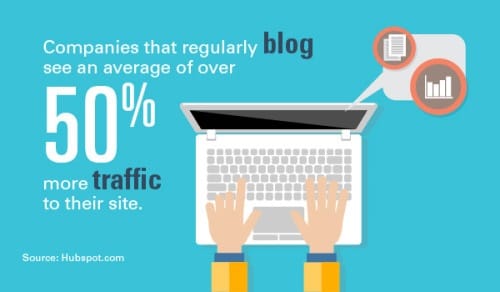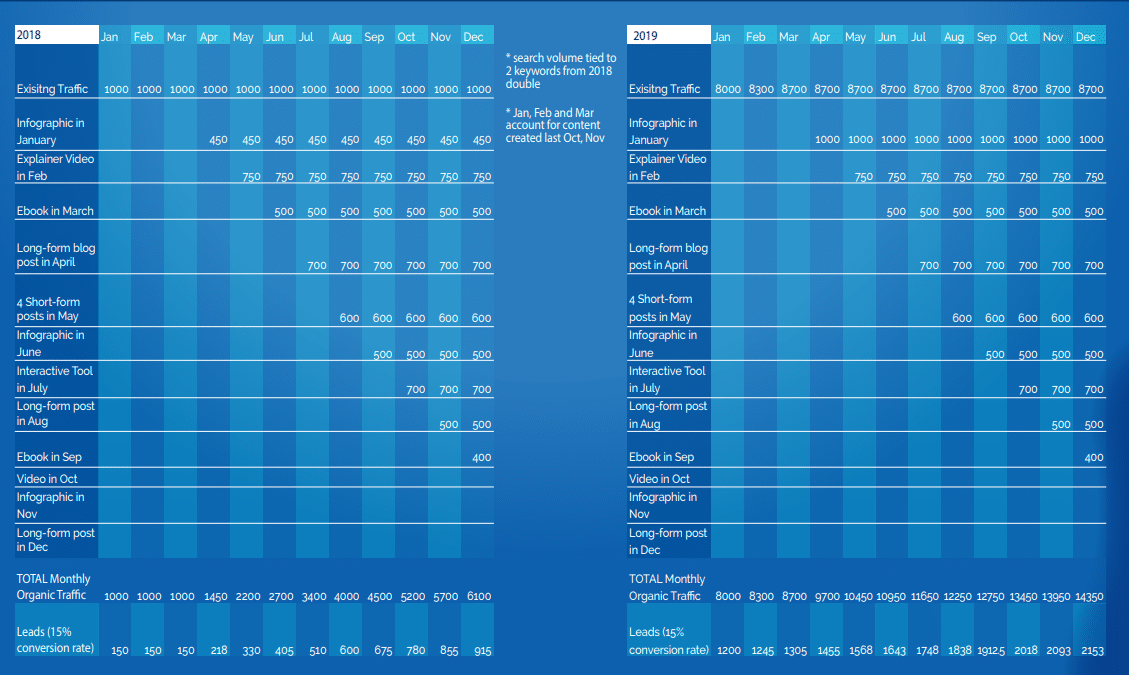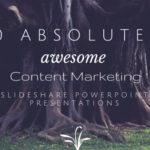Every inbound marketer knows content is the foundation of all inbound strategy.
Hubspot’s VP of Marketing Meghan Anderson is quoted as saying “Content is fundamental to inbound. It always has been. It always will be. The reason it’s fundamental is that every single piece of content out there is an opportunity for someone to find your company. To find your website. To engage with you for the first time. The internet has a long memory.” “In a given month, 70% of the traffic we’re going to get is going to come from content that we published NOT in that month. It might have been published a month before. It might have been published 3 years before.”

There’s a reason why sites like Pinterest, Instagram, and Snapchat have exploded. Each of them tap into various ways that we as people visually engage with content, and in turn, with brands.
Now, going back to Hubspot’s VP of Marketing and her conversation around content, she goes on to say something fascinating when you stop to think about it: “The interesting part about content is that it’s compounding. If you keep the content updated and you keep making sure there’s value there, people will continue to search and find it.”
So just as Benjamin Franklin referred to compound interest as the most powerful force in the world, Anderson astutely points out how a proper content strategy will have the ability to compound your inbound traffic given the evergreen value that search engines allow for.
Here’s a simplified view of that math:
Let’s say I create an ebook that’s published live on my site (on top of using it for downloads into an automation sequence) in January tied to a particular problem my customer avatar is having.
That ebook might start ranking in April for an important keyword to my avatar and my company, bringing in 500 people to my website each month.
In February, I create a series of infographics on other keywords, bringing in 1,000 people to my website in May.
In March I create a series of short explainer videos tied to some other keyword, bringing in 500 people to my website in June.
Two things are going on here:
1. As the months go on, you are benefiting from the search volume from the content created in each of the months before that.
2. If the topic/keyword is current, it’s also likely to experience an increase in monthly search volume.
So all in all, your traffic to your website can experience a double boost in the form of combined keyword rankings tied to the relevant and valuable content you created in the months previous, and at the same time benefit from the increased search volume of terms that are topical and current and relevant.
Now, let’s take a peek at a hypothetical content strategy over the course of 2 years, and you can see firsthand the power behind what we’re talking about.
In the chart below (click image to see a larger version), each month we’re creating some high-quality piece (or pieces) of content.
The following assumptions can be made:
1. Average of 90 days to rank that piece of content. You’ll find data from Ahrefs, Moz, Neil Patel, etc that show this can range from 60-180 days. I went with a mildly aggressive, but not unrealistic estimation. Further, this is not a purely linear equation on several fronts. Traffic levels to the website will not just wake up at it’s maxed amount. Your ranking is likely to slowly climb to the position it takes, so it’s not all or nothing. To keep this example simple, I just input a set traffic level when achieved 90 days later, versus the gradual increase.
2. Throughout a given year I did not account for search volume changes from month to month. If you go after the right keywords that are topical and current, you likely will see volume increase over a year. That said, on the flipside, volume can also go down, so I left it constant month to month
3. That said, in the 2019 side, I did account for 2 of the keywords doubling in traffic compared to 2018
In the example chart we just looked at, look at the lead counts. Eric Siu from Single Grain cites a roughly 15% conversion rate from SEO-based leads. This is where everything starts to get very exciting.
As with all well integrated inbound strategies, if you have the proper conversion rate optimization strategies in place for when someone comes to your site to view the content they found on search, you should be able to convert them into leads at a roughly 15% clip. While the traffic numbers are hypothetical, I kept the numbers pretty reasonable.
Imagine starting the year in 2018 with the organic traffic of just 1,000 per month creating 150 leads per month, and by year’s end, you’re at 915 leads per month. That’s an over 6x increase in lead counts, all the while not having spent a penny on PPC, email prospecting, retargeting, etc.
Taking this a year further, employing the exact same strategy, by the end of the next year, you would be at 2,153 leads per month, a 14x increase in lead counts from your starting point in 2018. The real crazy part to all of this is that the fictitious example cited in the chart is actually very conservative in terms of content creation.

Now, this is not to say it will be easy to employ this strategy. You will need either an absolutely ninja level in-house team who can churn out high-quality content and have expertise across multiple disciplines (research, copywriting, editing/review, design, infographics design [not the same thing as design] animation, interactive), or you will need to invest in hiring a kickass company to build this content out monthly. But you can see firsthand the power of a consistent on-going content strategy.
Conclusion
At the end of the day, on-going content creation is vital to the success of an inbound strategy. That said, to go from having a good content strategy to having a ninja-level awesome content strategy involves embracing the science behind visual learning.
It’s been proven that as humans, our brains process visual information 60,000 times faster than text. So if you’re a content marketer, and you had the option of putting something out there, whether on your blog, your social channels, email, ads, etc. knowing that previous data point, would you even consider going with a text-based approach over visual? I would imagine not.
Life is not about extremes, so naturally, every piece of content can’t nor should it be all visual. It’s okay to have short-form blog posts that aren’t visual rich. That said, as proven from Backlinko.com’s 1 million Google search result factor study, “content with at least one image significantly outperformed content without any images.” So at the very least, get SOME sort of visual/image onto your short-form (and all) posts.
Leverage Visual Marketing To Scale Your Inbound Lead Flow Today






